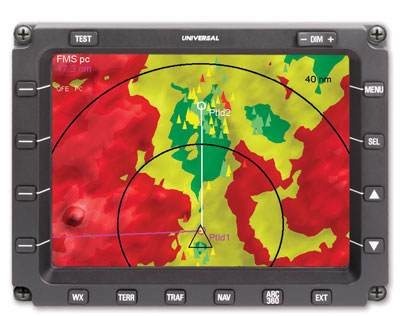
Features
Regulations
Safety
Waypoint: New TAWS regs finally in place
In early July, Transport Canada (TC) issued the long expected and final amendments to the CARs (Canadian Aviation Regulations) requiring the installation of TAWS (Terrain Awareness Warning Systems).
September 10, 2012 By Rob Seaman
In early July, Transport Canada (TC) issued the long expected and final amendments to the CARs (Canadian Aviation Regulations) requiring the installation of TAWS (Terrain Awareness Warning Systems). In brief, these new regulations apply to virtually all commercial air taxi, commuter and/or airline operations as well as larger turbine-powered private aircraft. The applicable CARs are Subparts 703, 704 and 705 as well as high-end 604. TAWS has long been a requirement in the United States and other parts of the world.
 |
|
| “SMS is but one tool in the box. It should not be the entire box.” PHOTO: Universal Avionics
|
These rules were drafted more than a decade ago, and were originally intended to have had a harmonized implementation with FAA TAWS rulemaking in 2005. The TSB (Transportation Safety Board) has been suggesting, recommending, generally demanding and virtually begging that the CARs be changed since March of 1995.
In a Government of Canada press release last December, Transport Minister Denis Lebel said, “Transport Canada is committed to the continuous improvement of aviation safety . . . Using TAWS will significantly reduce the risk of airplane crashes with land, water or obstacles.” Apparently, after the most recent spate of Controlled Flight Into Terrain (CFIT) accidents, Transport Canada (TC) wants to be seen to be springing into action!
According to information from TC in the regulatory change documents for TAWS, the number of CFIT incidents tracked from 1977 to 2009 was the main driver for this new regulation. During that period of time, 35 airworthy aircraft were flown into the ground while under pilot control. The CFIT accidents resulted in 100 fatalities and 46 serious injuries during that reporting period. Unfortunately, a recent rash of incidents since then has driven those numbers up even higher.
So why has it taken so long to make this proven safety technology mandatory in Canada? The answer is bureaucracy and politics – and the problem really is systemic. As always, there were prominent alphabet advocacy groups, and no doubt large organizations, objecting to any mandate that would compel their members or companies to spend money. That said, Canadian Aviation Regulation Advisory Council (CARAC) records indicate that all of these dissents were placed in a typical CARAC timeframe and process.
The TC agenda since 2002 has focused more on SMS (Safety Management Systems) and the belief seems to be that this theoretical and paper-driven “systems” approach can be the catalyst for further improvements in aviation safety. In shelving NPAs, TC assumed a calculated risk that there would be no CFIT accidents and no mid-air collisions in Canada during the time these regulations were languishing on the shelf. And while no mid-air collisions have occurred, there have been many other incidents.
In 2006, the TorStar Newspaper Group did an exposé series of articles on aviation safety. They investigated more than 800 incidents between 2001 and 2005 in which Canadian planes came dangerously close to one another. In the end, the determination was more than 80,000 passengers were put at risk in those incidents, according to the study conducted by the Toronto Star, Hamilton Spectator and The Record of Waterloo Region.
When the (political) smoke cleared, TC “unbundled” the TCAS NPAs from the TAWS NPAs, and propelled the TCAS rules into play in the fall of 2006. TAWS NPAs remained on the shelf, however, as CFIT had not been subject to the same media scrutiny. The transport minister of the day issued a press release similarly worded to the one just issued by Minister Lebel, wherein the Government of Canada postured itself as springing into action to ensure the safety of the Canadian traveling public. Apparently, the TorStar series forced political action by the minister, likely to the dismay of TC’s senior management of the day.
The aviation industry is still waiting for TC to spring into action and propel the long-awaited NPAs for UHF ELTs into legislation.
In the end, the final amendments to the CARs requiring the installation of TAWS can be seen as a very positive step in ensuring the safety of Canadians nationwide. And while SMS is an important tool, as one TC employee recently said to me, “SMS is but one tool in the box. It should not be the entire box.”
Let’s hope that going forward, TC focuses on a complete safety toolbox when it comes to aviation in this country – and important initiatives will not be mired in political processes. The Canadian public deserves it.
Rob Seaman is a Wings writer and columnist.